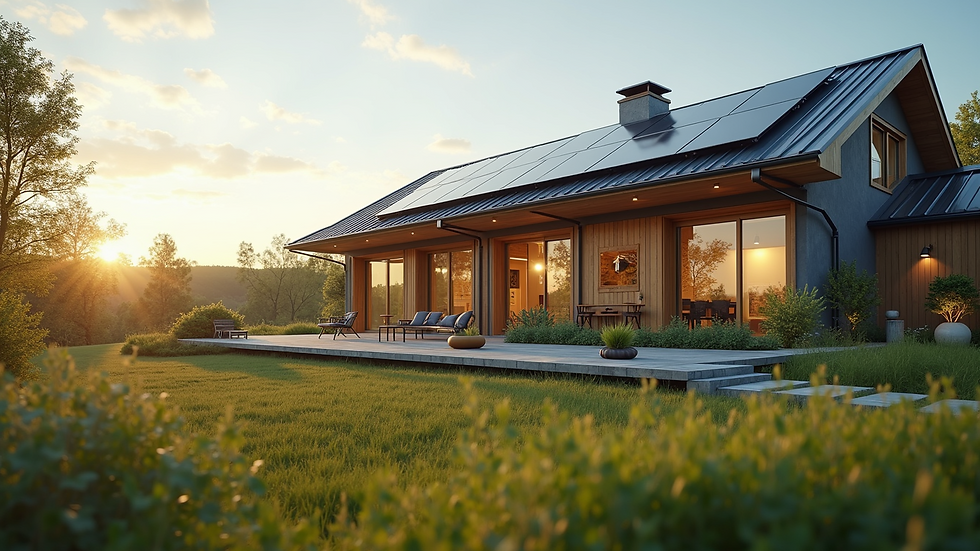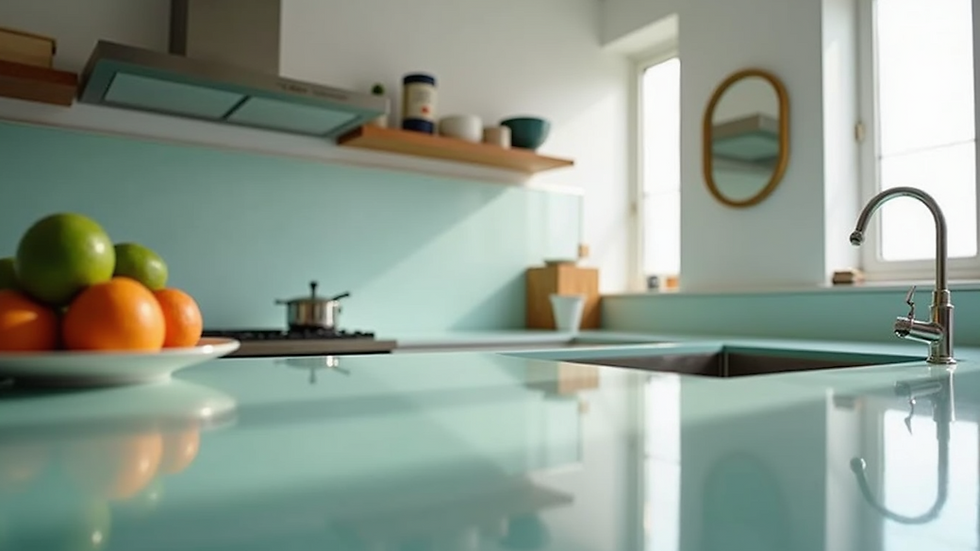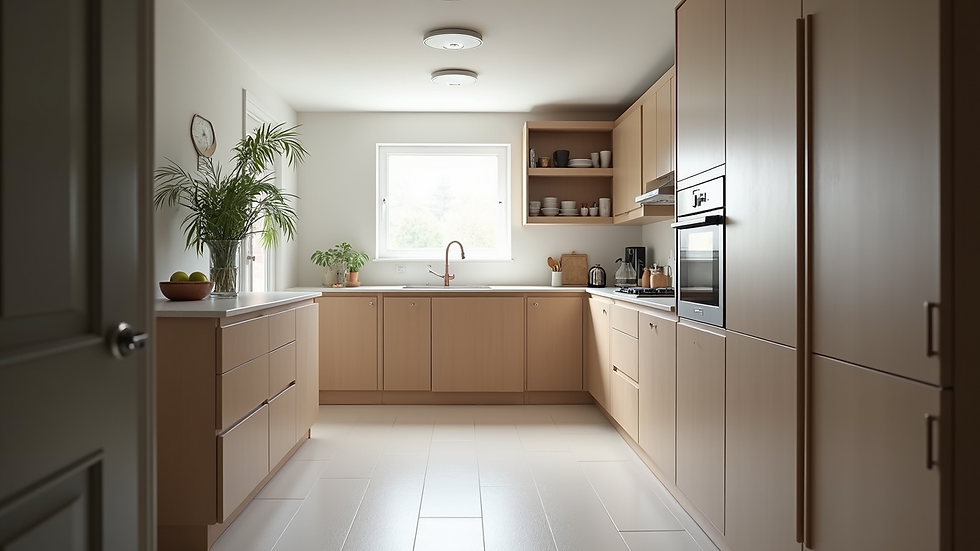Sustainable Design Trends for Eco-Friendly Homes
- Chesway Slabbert

- Aug 4, 2025
- 5 min read
In recent years, the push for sustainability has transformed the way we think about home design. As more people become aware of their environmental impact, the demand for eco-friendly homes has surged. This shift is not just a trend; it is a movement towards a more sustainable future. In this blog post, we will explore the latest sustainable design trends that are shaping eco-friendly homes.
Sustainable design is about creating spaces that are not only beautiful but also kind to the planet. From energy-efficient appliances to sustainable materials, there are many ways to make your home more eco-friendly. Let’s dive into some of the most exciting trends in sustainable design.
1. Energy Efficiency
One of the most significant trends in sustainable design is energy efficiency. Homeowners are increasingly looking for ways to reduce their energy consumption. This can be achieved through various means, such as:
Energy-efficient appliances: These appliances use less energy than standard models, helping to lower utility bills and reduce carbon footprints. Look for appliances with the ENERGY STAR label.
Smart home technology: Smart thermostats and lighting systems allow homeowners to monitor and control their energy use more effectively. For example, a smart thermostat can learn your schedule and adjust the temperature accordingly, saving energy when you are not home.
Solar panels: Installing solar panels is a great way to harness renewable energy. They can significantly reduce electricity costs and even provide energy back to the grid.
By incorporating these energy-efficient solutions, homeowners can create a more sustainable living environment.
2. Sustainable Materials
The choice of materials plays a crucial role in sustainable design. Many homeowners are opting for materials that are not only durable but also environmentally friendly. Some popular sustainable materials include:
Bamboo: This fast-growing plant is a renewable resource that can be used for flooring, furniture, and even cabinetry. Bamboo is strong, lightweight, and has a low environmental impact.
Reclaimed wood: Using reclaimed wood reduces the need for new lumber and gives a unique character to homes. It can be used for flooring, beams, and furniture.
Recycled metal: Metal can be recycled indefinitely without losing its quality. Using recycled metal for roofing or siding can significantly reduce the environmental impact of a home.
Choosing sustainable materials not only benefits the environment but also adds a unique touch to home design.
3. Indoor Air Quality
Improving indoor air quality is another essential aspect of sustainable design. Many traditional building materials can release harmful chemicals into the air. To create a healthier living space, consider the following:
Low-VOC paints and finishes: Volatile organic compounds (VOCs) can cause health issues and contribute to air pollution. Opt for low-VOC or zero-VOC paints and finishes to improve indoor air quality.
Natural fibers: Using natural fibers for carpets, rugs, and upholstery can reduce the presence of harmful chemicals. Materials like wool, cotton, and jute are excellent choices.
Houseplants: Incorporating houseplants can help purify the air. Plants like snake plants and peace lilies are known for their air-cleaning properties.
By focusing on indoor air quality, homeowners can create a healthier and more comfortable living environment.
4. Water Conservation
Water conservation is becoming increasingly important in sustainable design. With water scarcity becoming a global issue, homeowners are looking for ways to reduce their water usage. Here are some effective strategies:
Low-flow fixtures: Installing low-flow faucets, showerheads, and toilets can significantly reduce water consumption without sacrificing performance.
Rainwater harvesting: Collecting rainwater for irrigation or other non-potable uses can help conserve water. This system can be as simple as a rain barrel or as complex as a full rainwater collection system.
Drought-resistant landscaping: Choosing native plants that require less water can reduce the need for irrigation. Xeriscaping is a landscaping method that focuses on water conservation.
Implementing these water conservation strategies can lead to significant savings and a more sustainable home.
5. Biophilic Design
Biophilic design is a trend that emphasizes the connection between nature and the built environment. This design philosophy aims to create spaces that promote well-being and harmony with nature. Some ways to incorporate biophilic design include:
Natural light: Maximizing natural light through large windows or skylights can enhance mood and reduce the need for artificial lighting.
Indoor-outdoor living: Creating seamless transitions between indoor and outdoor spaces can foster a connection with nature. Consider adding sliding glass doors or outdoor living areas.
Natural materials: Using materials that reflect the natural environment, such as stone, wood, and plants, can create a calming atmosphere.
Biophilic design not only enhances the aesthetic appeal of a home but also promotes mental and physical well-being.
6. Modular and Prefabricated Homes
Modular and prefabricated homes are gaining popularity as a sustainable housing option. These homes are built in sections in a factory and then assembled on-site. The benefits of modular homes include:
Reduced waste: Building in a controlled environment minimizes material waste and allows for better quality control.
Energy efficiency: Many modular homes are designed with energy efficiency in mind, incorporating insulation and energy-efficient systems.
Affordability: Modular homes can often be more affordable than traditional homes, making sustainable living accessible to more people.
As the demand for sustainable housing grows, modular and prefabricated homes are becoming a viable option for eco-conscious buyers.
7. Smart Landscaping
Smart landscaping is another trend that supports sustainable design. This approach focuses on creating outdoor spaces that are both beautiful and environmentally friendly. Some key elements of smart landscaping include:
Native plants: Using native plants in landscaping can reduce the need for water and maintenance. These plants are adapted to the local climate and soil conditions.
Permeable paving: Installing permeable paving materials allows rainwater to soak into the ground, reducing runoff and promoting groundwater recharge.
Edible gardens: Incorporating edible plants into landscaping can provide fresh produce while enhancing the beauty of outdoor spaces.
Smart landscaping not only enhances the aesthetic appeal of a home but also contributes to environmental sustainability.
8. Community and Collaboration
Sustainable design is not just about individual homes; it also involves community and collaboration. Many neighborhoods are embracing sustainable practices through:
Community gardens: These shared spaces allow residents to grow their own food while fostering a sense of community.
Sustainable building practices: Collaborating with local builders and architects who prioritize sustainability can lead to more eco-friendly developments.
Education and awareness: Hosting workshops and events focused on sustainability can help raise awareness and encourage more people to adopt eco-friendly practices.
By working together, communities can create a more sustainable future for everyone.
Embracing a Greener Future
As we explore these sustainable design trends, it becomes clear that creating eco-friendly homes is not just a passing fad. It is a necessary step towards a healthier planet. By incorporating energy-efficient solutions, sustainable materials, and innovative design practices, homeowners can make a positive impact on the environment.
The journey towards sustainability may seem daunting, but every small change counts. Whether you are building a new home or renovating an existing one, consider these trends to create a space that is not only beautiful but also kind to the Earth.
By embracing sustainable design, we can all contribute to a greener future. Let’s take these steps together and make our homes a reflection of our commitment to the planet.





Comments